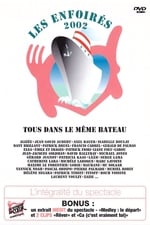Informations personnelles
Célèbre pour Interprétation
Apparitions connues 69
Genre Femme
Date de naissance 5 décembre 1966 (57 ans)
Lieu de naissance Forbach, Moselle, France
Alias
- -
Score de contenu
100
Superbe ! Cette fiche semble complète !
Connectez-vous afin de
signaler un problème.
Biographie
Patricia Kaas (born 5 December 1966) is a French singer. Her music is a mix of pop, cabaret, jazz, and chanson.
Since the appearance of her 1988 debut album Mademoiselle chante..., Kaas has sold over 17 million records worldwide. She had her greatest success in Germany, Switzerland, Belgium, Canada, Russia, Finland, Ukraine, and South Korea with her third album Je te dis vous. In 2002, Kaas made her film debut in And Now... Ladies and Gentlemen with Jeremy Irons. She represented France in the Eurovision Song Contest 2009 in Moscow and finished in eighth place.
Patricia Kaas, the youngest of her family, was born on 5 December 1966 in Forbach, Lorraine, France, near the German border. Her father, Joseph Kaas, a miner, was a French Germanophone (Alsace-Lorraine was annexed by France in 1918) and her mother, Irmgard, was a German from Saar. Kaas grew up in Stiring-Wendel, between Forbach and Saarbrücken on the French side of the border. Until the age of six, she spoke only Lorraine Franconian. Her mother encouraged Kaas, then a young girl, to become a singer. At the age of only eight Kaas was already singing songs by Sylvie Vartan, Dalida, Claude François and Mireille Mathieu, as well as English-language songs such as "New York, New York", at various small events such as the marriage of her brother. Her first real success came when she received first place at a pop song contest.
Kaas took her first step into the professional music business at the age of 13, when, with the help of her brother Egon, she signed a contract with the Saarbrücken club Rumpelkammer. Kaas took the name Pady Pax — after Pax Majorettes, a brass band from Stiring-Wendel, of which she and her sister Carine were members — and for seven years appeared with the band, Dob's Lady Killers. At 16, she took a placement with a model agency in Metz. Her first attempts to break into the music business failed; a producer rejected her on the ground that the world did not need a second Mireille Mathieu. Kaas's producer at this time was the architect Bernard Schwartz.
In 1985, at 19 years old, Kaas was sponsored by French actor Gérard Depardieu. Schwartz had seen her singing at the Rumpelkammer in Saarbrücken and introduced her to the songwriter François Bernheim. Bernheim worked with her and convinced Depardieu to produce her music.
Depardieu produced Kaas's first single Jalouse (Eng: Jealous), written by Bernheim and Depardieu's wife, Elisabeth. The single was published by EMI, but was a flop. Nonetheless, her encounter with Depardieu was one of the most important events at the beginning of Kaas's artistic career.
Through Jalouse and Bernheim, the French songwriter Didier Barbelivien became aware of Kaas. His song Mademoiselle chante le blues (Eng: Lady sings the blues) was the singer's first big hit. The single was published in 1987 by Polydor, and reached 7th place in the French singles chart. The next year, Kaas's second single D'Allemagne (Eng: From Germany) was recorded, written by Barbelivien and Bernheim. ...
Source: Article "Patricia Kaas" from Wikipedia in English, licensed under CC-BY-SA 3.0.
Patricia Kaas (born 5 December 1966) is a French singer. Her music is a mix of pop, cabaret, jazz, and chanson.
Since the appearance of her 1988 debut album Mademoiselle chante..., Kaas has sold over 17 million records worldwide. She had her greatest success in Germany, Switzerland, Belgium, Canada, Russia, Finland, Ukraine, and South Korea with her third album Je te dis vous. In 2002, Kaas made her film debut in And Now... Ladies and Gentlemen with Jeremy Irons. She represented France in the Eurovision Song Contest 2009 in Moscow and finished in eighth place.
Patricia Kaas, the youngest of her family, was born on 5 December 1966 in Forbach, Lorraine, France, near the German border. Her father, Joseph Kaas, a miner, was a French Germanophone (Alsace-Lorraine was annexed by France in 1918) and her mother, Irmgard, was a German from Saar. Kaas grew up in Stiring-Wendel, between Forbach and Saarbrücken on the French side of the border. Until the age of six, she spoke only Lorraine Franconian. Her mother encouraged Kaas, then a young girl, to become a singer. At the age of only eight Kaas was already singing songs by Sylvie Vartan, Dalida, Claude François and Mireille Mathieu, as well as English-language songs such as "New York, New York", at various small events such as the marriage of her brother. Her first real success came when she received first place at a pop song contest.
Kaas took her first step into the professional music business at the age of 13, when, with the help of her brother Egon, she signed a contract with the Saarbrücken club Rumpelkammer. Kaas took the name Pady Pax — after Pax Majorettes, a brass band from Stiring-Wendel, of which she and her sister Carine were members — and for seven years appeared with the band, Dob's Lady Killers. At 16, she took a placement with a model agency in Metz. Her first attempts to break into the music business failed; a producer rejected her on the ground that the world did not need a second Mireille Mathieu. Kaas's producer at this time was the architect Bernard Schwartz.
In 1985, at 19 years old, Kaas was sponsored by French actor Gérard Depardieu. Schwartz had seen her singing at the Rumpelkammer in Saarbrücken and introduced her to the songwriter François Bernheim. Bernheim worked with her and convinced Depardieu to produce her music.
Depardieu produced Kaas's first single Jalouse (Eng: Jealous), written by Bernheim and Depardieu's wife, Elisabeth. The single was published by EMI, but was a flop. Nonetheless, her encounter with Depardieu was one of the most important events at the beginning of Kaas's artistic career.
Through Jalouse and Bernheim, the French songwriter Didier Barbelivien became aware of Kaas. His song Mademoiselle chante le blues (Eng: Lady sings the blues) was the singer's first big hit. The single was published in 1987 by Polydor, and reached 7th place in the French singles chart. The next year, Kaas's second single D'Allemagne (Eng: From Germany) was recorded, written by Barbelivien and Bernheim. ...
Source: Article "Patricia Kaas" from Wikipedia in English, licensed under CC-BY-SA 3.0.








